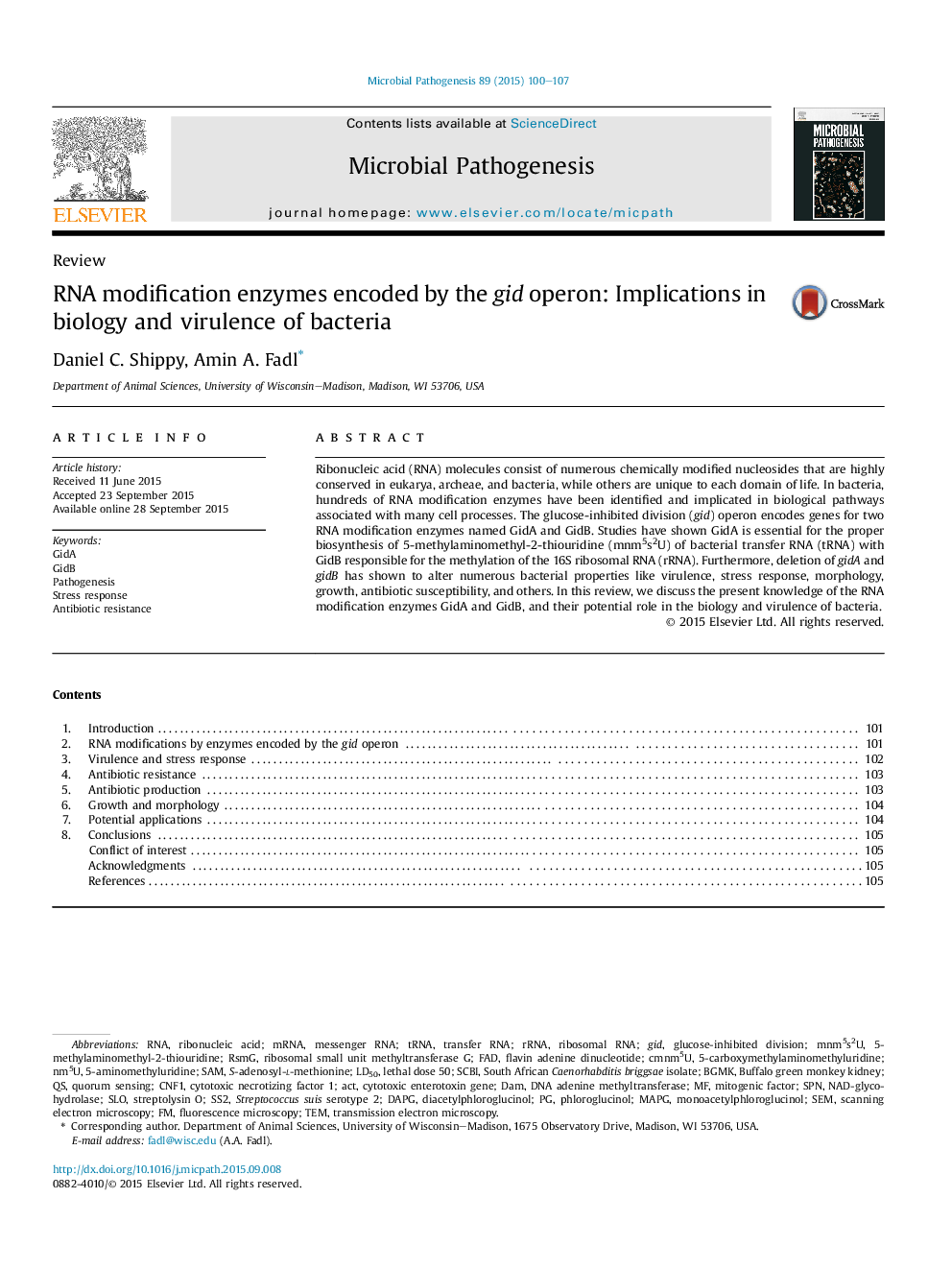| Article ID | Journal | Published Year | Pages | File Type |
|---|---|---|---|---|
| 3416449 | Microbial Pathogenesis | 2015 | 8 Pages |
Ribonucleic acid (RNA) molecules consist of numerous chemically modified nucleosides that are highly conserved in eukarya, archeae, and bacteria, while others are unique to each domain of life. In bacteria, hundreds of RNA modification enzymes have been identified and implicated in biological pathways associated with many cell processes. The glucose-inhibited division (gid) operon encodes genes for two RNA modification enzymes named GidA and GidB. Studies have shown GidA is essential for the proper biosynthesis of 5-methylaminomethyl-2-thiouridine (mnm5s2U) of bacterial transfer RNA (tRNA) with GidB responsible for the methylation of the 16S ribosomal RNA (rRNA). Furthermore, deletion of gidA and gidB has shown to alter numerous bacterial properties like virulence, stress response, morphology, growth, antibiotic susceptibility, and others. In this review, we discuss the present knowledge of the RNA modification enzymes GidA and GidB, and their potential role in the biology and virulence of bacteria.
